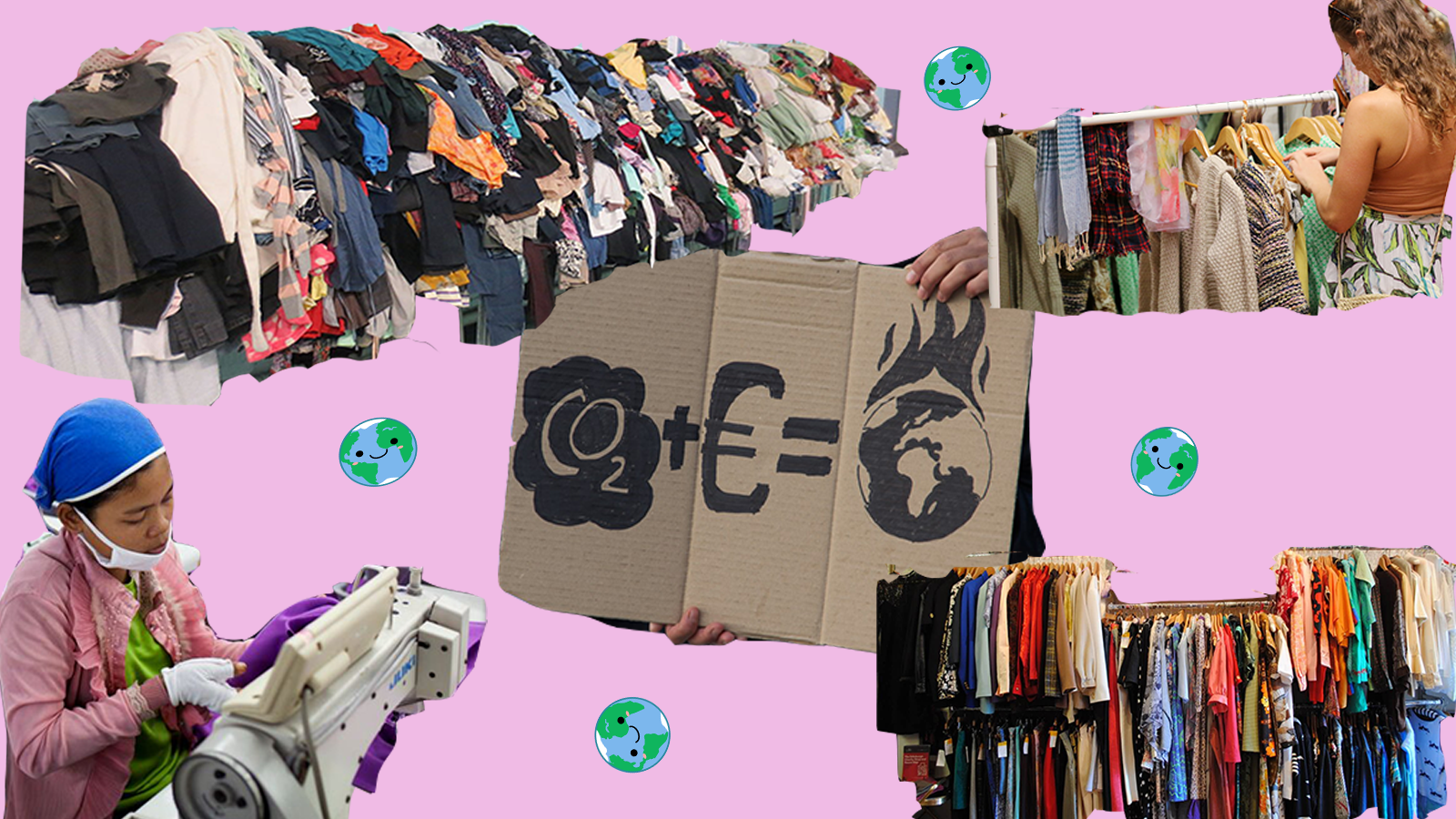Fast fashion items are the cheap and trendy garments found filling up high-street stores across the globe. In order to generate profit, companies will create items which echo those in high fashion but at a fraction of the production cost and market price, allowing trends to be followed and then swiftly abandoned.
At Christmas, the average family will increase spending on clothes by 43%. This, of course, means that demand for fast fashion will increase, as a result of consumers buying easy Christmas presents or yet another tragic, disposable Christmas jumper. Fast fashion providers will therefore churn out even more products at even lower prices to boost profit, evident in the Black Friday, Cyber Monday, and Christmas sales.
At first glance, this all seems great: more clothes for us, lower prices, and a boost to the economy. It’s a Christmas miracle.
However, we must stop and think about the environmental costs that come with producing vast quantities of clothes. In China, farmers downstream of clothing factories have been able to predict fashion trends based on the colour of the water that flows past them. Textile dyeing is the second largest polluter of water after agriculture, and the textile industry on the whole causes more pollution than international shipping and aviation combined.
Before starting to explore the alternatives to fast fashion, I want to add a little disclaimer that fast fashion giants exist to make profit and should therefore not dictate what you wear. The Instagram campaigns by H&M and the carefully curated mannequins in Topshop windows are not a fashion standard. You do not have to emulate fast fashion. I think that the end goal should be to make fast fashion sustainable, however, the high street is not the gospel on what is fashionable and what isn’t.
A quick Google search on how to make sustainable fashion choices reveals that the most commonly suggested option is charity shopping. This is far more sustainable than shopping for new clothing as there is no demand created for natural resources. Plus, charity shops may produce especially lucrative finds around Christmas thanks to unwanted gifts and ill-fitting sale purchases. In Oxford, I’d highly recommend the charity shops on Cowley Road.
Please remember to also donate your own unwanted clothes to charity shops in order to keep the sustainable cycle going. Other second-hand clothing options such as vintage sales, eBay and Depop are all also brilliant for supporting sustainable fashion due to their minimal demand for new products, again producing no strain on resources. Alternatively, clothing swaps amongst friends are a fun and sustainable way to refresh your wardrobe.
If you’re still buying new clothes, there are ways to do so with greater mindfulness and awareness. Smaller, independent retailers with greater transparency in their production chains and manufacturing processes are likely to be your most sustainable option. Many retailers even use recycled material for their clothes, such as Patagonia, Lucy and Yak, and Batoko.
It is true, however, that these products often come with a heftier price tag. However, some fast fashion companies do offer compromises between environmental and financial sustainability, with high-street brands introducing cheaper, sustainable lines such as H&M Conscious. I feel that the best approach is to make fast fashion sustainable rather than to exclusively support financially inaccessible forms of sustainable fashion; it is therefore important to show fast fashion giants that there is a demand for sustainable clothing.
Making your clothes last longer also helps to reduce the detrimental impact of fast fashion. The tag #VisibleMending offers some fantastic ideas for how to make your clothes remain wearable and beautiful, and the Christmas/New Year period is a wonderful time to try this out – perhaps you could even make it a resolution! Now’s the time to take advantage of Christmas sales and purchase a sewing machine. Not only can you mend clothes this way, but you can also try using recycled or second-hand fabric to make your own clothes. It’s the perfect creative outlet that simultaneously helps the planet!
The topic of sustainability is an important one, especially at Christmas when the materialism of the 21st century is perhaps most evident. In order to combat the devastating effects of the fashion industry on our planet, sustainability must become a focus for us all when we consider what we wear. We interact with fashion on the daily, so changing the way in which we purchase it can be one of the most effective ways to do your bit and help the planet.



